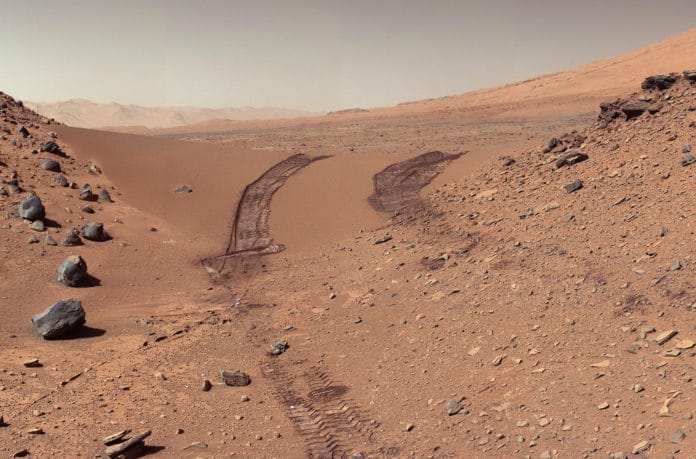In Earth’s deep continental subsurface, where groundwaters are often isolated for several years, the energy released by radionuclides within rock produces oxidants and reductants that drive metabolisms of non-photosynthetic microorganisms. Similar processes could support past and present life in the martian subsurface.
Martian meteorites are those rocks that blasted off on the Martian surface and eventually landed on Earth. As NASA‘s Perseverance rover started exploring ancient life on the surface of Mars, a new study suggests that the Martian subsurface might be a good place to look for possible present-day life on the Red Planet.
According to the study, if those rocks are in constant contact with water, they would generate vital chemical energy required to support microbial communities. As these rocks may represent vast swaths of the Martian crust, there is an excellent possibility that the Martian subsurface could be habitable.
Jesse Tarnas, a postdoctoral researcher at NASA’s Jet Propulsion Laboratory who led the study while completing his Ph.D. at Brown University, said, “The big implication here for subsurface exploration science is that wherever you have groundwater on Mars, there’s a good chance that you have enough chemical energy to support subsurface microbial life. We don’t know whether life ever got started beneath the surface of Mars, but if it did, we think there would be ample energy there to sustain it right up to today.”
In places like Canada’s Kidd Creek Mine, these “sulfate-reducing” microbes have been found living more than a mile underground, in water that hasn’t seen the light of day in more than a billion years. Scientists want to understand these underground systems better and look for similar habitats on Mars and elsewhere in the solar system.
In this study, scientists determined whether the ingredients for radiolysis-driven habitats could exist on Mars. For this, they used data from NASA’s Curiosity rover and other orbiting spacecraft. They also used compositional data from a suite of Martian meteorites representing different parts of the planet’s crust.
In particular, scientists looked for elements like thorium, uranium, and potassium; sulfide minerals that could be converted to sulfate; and rock units with adequate pore space to trap water. They found that all the ingredients are present in sufficient abundance in several different types of Martian meteorites.
Regolith breccias were found to have the highest potential for life support.
Scientists noted, “the findings help make a case for an exploration program that looks for signs of present-day life in the Martian subsurface. Prior research has found evidence of an active groundwater system on Mars in the past, and there’s reason to believe that groundwater exists today. One recent study, for example, raised the possibility of an underground lake lurking under the planet’s southern ice cap. This new research suggests that wherever there’s groundwater, there’s life energy.”
Mustard said, “while there are certainly technical challenges involved in subsurface exploration, they aren’t as insurmountable as people may think. A drilling operation wouldn’t require ‘a Texas-sized oil rig,’ and recent advances in small drill probes could soon put the Martian depths within reach.”
“The subsurface is one of the frontiers in Mars exploration. We’ve investigated the atmosphere, mapped the surface with different wavelengths of light, and landed on the surface in half a dozen places, and that work continues to tell us so much about the planet’s past. But if we want to think about the possibility of present-day life, the subsurface is going to be where the action is.”
Journal Reference:
- J.D. Tarnas, J.F. Mustard, B. Sherwood Lollar, V. Stamenković, K.M. Cannon, J.-P. Lorand, T.C. Onstott, J.R. Michalski, O. Warr, A.M. Palumbo, A.-C. Please. Earth-like Habitable Environments in the Subsurface of Mars. Astrobiology, 2021; DOI: 10.1089/ast.2020.2386
